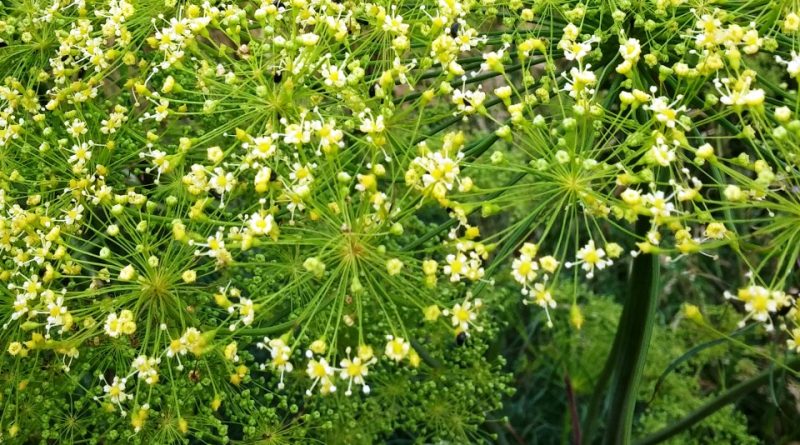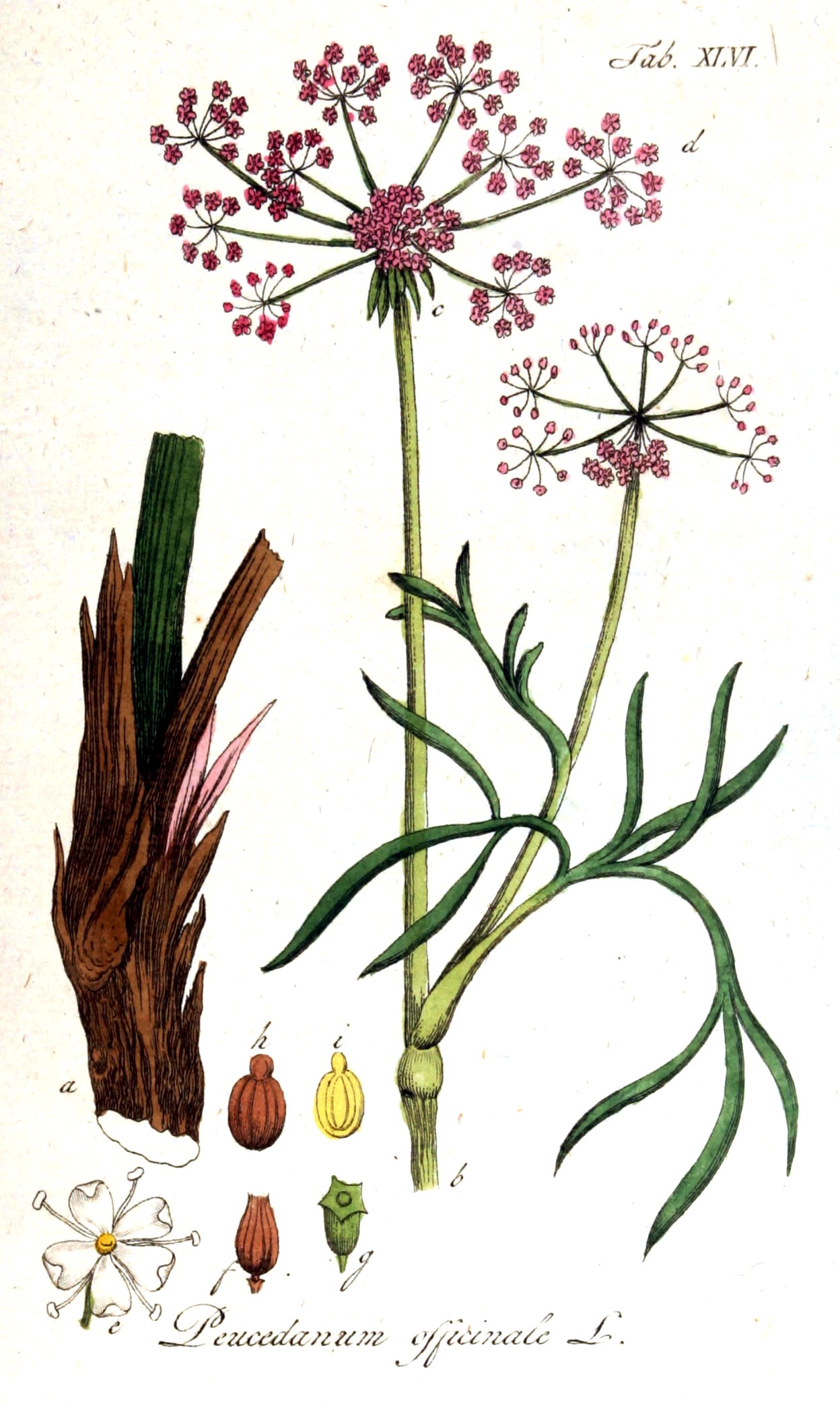Peucedanum officinale
Peucedanum officinale
Sulphurweed (Peucedanum officinale L.) is a herbaceous species belonging to the Apiaceae family.
Systematics –
From a systematic point of view it belongs to:
Eukaryota Domain,
Kingdom Plantae,
Magnoliophyta Division,
Magnoliopsida class,
Order Apiales,
Apiaceae family,
Genus Peucedanum,
P. officinale species.
The following terms are synonymous:
– Peucedanum italicum Mill .;
– Peucedanum stenocarpum Boiss. & Reut .;
– Selinum officinale (L.) Vest.
Etymology –
The term Peucedanum comes from the Greek πεύκη péuce pino and from δανός danós arid, dry, dry.
The specific officinal epithet comes from a medieval laboratory workshop: plants usable in pharmaceuticals, herbal medicine, liqueurs, perfumery and the like.
Geographic Distribution and Habitat –
The Sulphurweed is a Euro-Siberian-sub-pontic distribution plant.
It is present throughout Europe, including Great Britain, from south and east Germany to Portugal, central Russia and the Balkans.
In Italy it is present in all the northern regions except in Val d’Aosta and Trentino-Alto Adige, in Tuscany, Abruzzo, Molise, Puglia and Basilicata.
Its habitat is that of the arid uncultivated below the mountain belt, on the shores near the sea, in the meadows and in the saline areas.
Description –
Peucedanum officinale is a glabrous perennial herbaceous plant with stems up to 2 m tall, solid, streaked, sometimes slightly angled, scarcely mottled with grape red, surrounded at the base by fibrous remains of petioles.
The greenish-yellow flowers are gathered in umbels which contrast nicely with the bushy and radiant mass of leaves; these are dark green in color, with long petioles, bearing linear and sessile lobes, attenuated at both ends and with narrow and cartilaginous margins (ie, single lobes similar to blades of grass).
The schizocarpic fruit is a glabrous, dorsally compressed polachenary (diachene) with an elliptical outline, 6.5-10 (12) x 4-6 mm. Its mericarps have three obvious central ribs and thin wings that are narrower than the rest of the mericarp.
Cultivation –
Peucedanum officinale is a perennial plant that is harvested in its natural state for local use as a medicine and source of materials.
Care must be taken in handling this plant because the contact of the skin with its sap causes, in some people, photosensitivity and / or dermatitis.
It is an easy to grow plant that grows in any soil in a sunny location.
It is suitable for growing in groups with other plants in wild gardens.
Propagation occurs by seed which is sown at the beginning of spring, in areas with a milder climate, or towards the end of March in colder areas.
Sowing can be done in open fields or in seedbeds and subsequent transplantation.
Customs and Traditions –
Peucedanum officinale is a plant that, when the root is cut in spring, releases a considerable amount of a yellowish-green latex, which dries into a gummy oleoresin substance with a strong sulphurous scent.
This harvesting technique, and the product thus obtained, are very reminiscent of those of two other medicinal umbellifers: Ferula assa-foetida and Dorema ammoniacum.
The plant, which contains toxic alkaloids and which can cause photoallergic reactions, in the past was used for alleged medicinal properties especially against respiratory diseases.
The plant is anodyne, antispasmodic, aperitif, diaphoretic, diuretic and pectoral.
With this plant you can prepare an infusion that is used in the treatment of cough, bronchial catarrh, etc.
A homeopathic remedy is obtained from the roots. It is used in the treatment of bronchial catarrh, cough, intermittent fevers and to stimulate menstrual flow.
Also from the roots you can prepare a decoction that is diuretic, sudorific, antiscorbutic and controls menstruation.
The oleoresin derived from the drying of the latex of the root has properties similar to those derived from the oleoresin obtained from Dorema ammoniacum.
Peucedanum officinale has also been used in veterinary medicine.
Among other uses, it should be remembered that this plant produces a gum, similar to other Apiaceae.
The gum can be used as incense and also has medicinal value.
Preparation Method –
Peucedanum officinale is a plant that, especially in the past, was used for medicinal purposes.
The root of this plant is mainly used, which is harvested in spring or autumn and dried for later use.
Infusions or decoctions can be prepared and a homeopathic remedy is obtained from the roots.
Furthermore, it is possible to obtain an oleoresin derived from the drying of the latex of the root.
Guido Bissanti
Sources
– Acta Plantarum – Flora of the Italian Regions.
– Wikipedia, the free encyclopedia.
– Useful Tropical Plants Database.
– Conti F., Abbate G., Alessandrini A., Blasi C. (ed.), 2005. An annotated checklist of the Italian vascular flora, Palombi Editore.
– Pignatti S., 1982. Flora of Italy, Edagricole, Bologna.
– Treben M., 2000. Health from the Lord’s Pharmacy, Advice and experiences with medicinal herbs, Ennsthaler Editore.
Warning: Pharmaceutical applications and alimurgical uses are indicated for informational purposes only, they do not represent in any way a medical prescription; therefore no responsibility is taken for their use for curative, aesthetic or food purposes.


